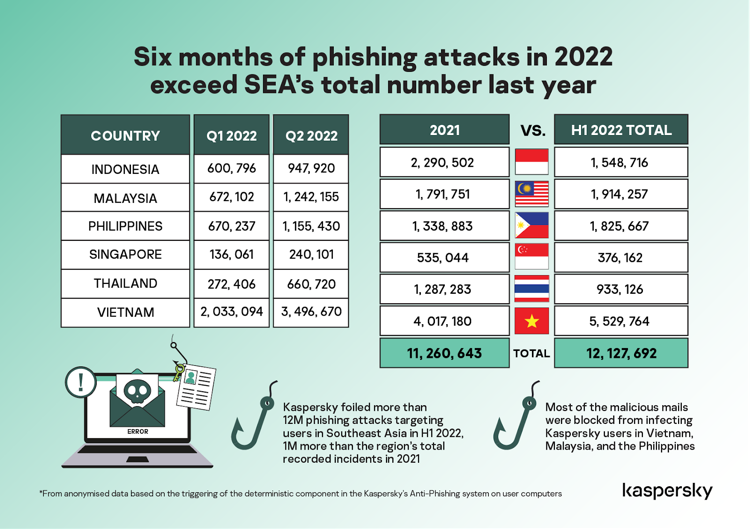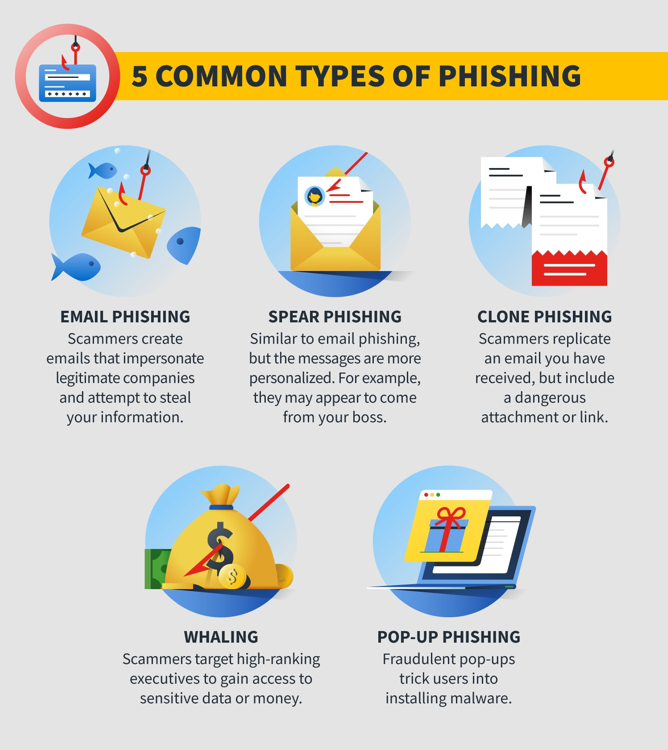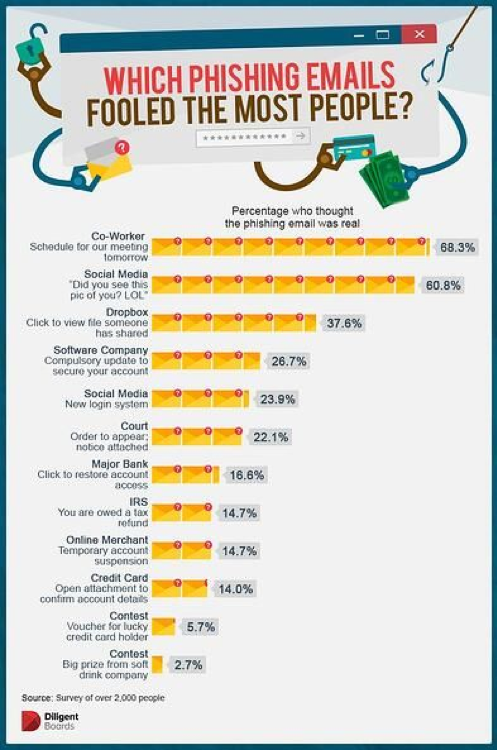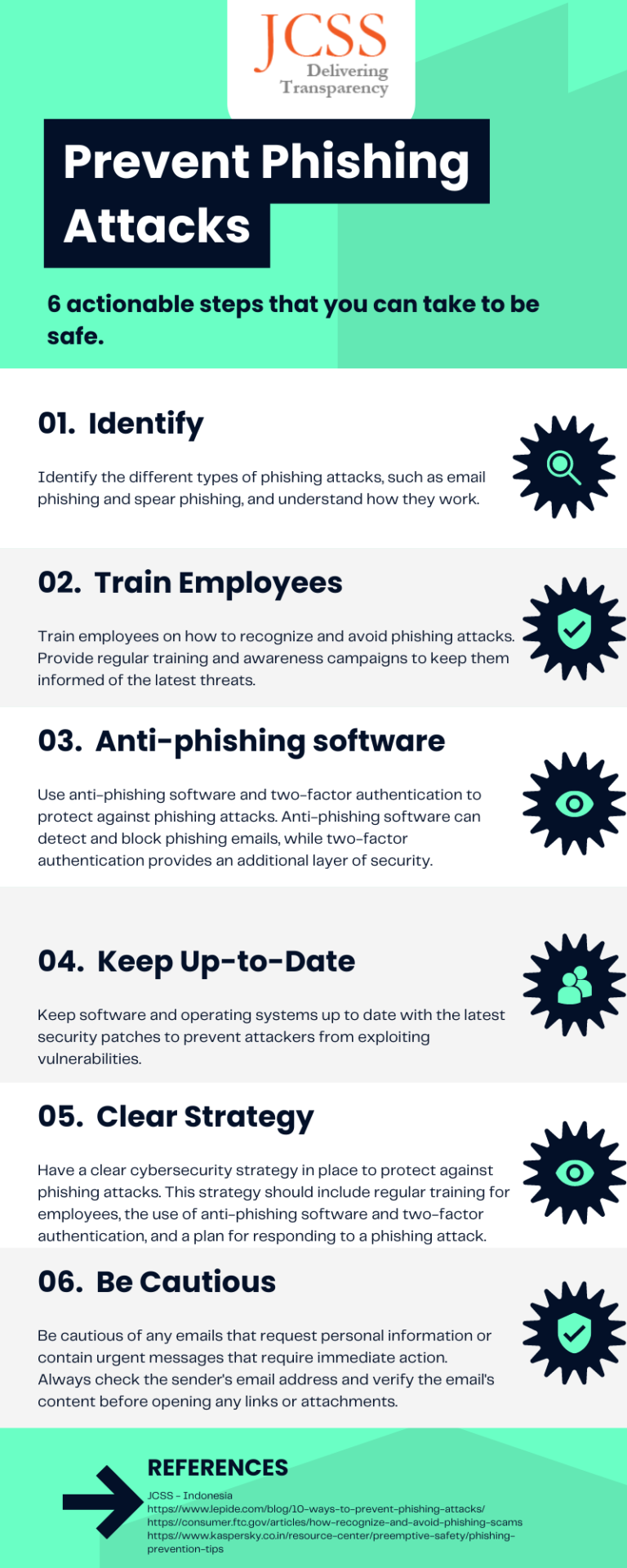How to Prevent Phishing Attacks and Protect Yourself and Your Business
As cybercriminals continue to develop more sophisticated tactics to steal sensitive information, phishing attacks remain one of the most effective techniques used by attackers to gain access to personal and business data. In this article, we will explore how to prevent phishing attacks and protect yourself and your business from becoming a victim of cybercrime.

Sorce: Kaspersky
Phishing attacks are fraudulent attempts to obtain sensitive information such as usernames, passwords, and credit card details by disguising themselves as a trustworthy entity via electronic communication, typically via email or messaging apps. Cybercriminals use social engineering tactics to trick victims into clicking on malicious links or opening attachments that contain malware, allowing attackers to gain access to sensitive information.
To prevent phishing attacks, it is crucial to identify and understand the different types of phishing attacks. The two most common types of phishing attacks are email phishing and spear phishing. Email phishing is a mass attack that targets a large number of people, while spear phishing is a more targeted attack that is customized to trick a specific individual.

To protect yourself from email phishing, it is essential to check the sender’s email address and verify the email’s content before opening any links or attachments. Cybercriminals often disguise their email address by using a similar name or domain, so always check for any spelling mistakes or variations in the email address. Furthermore, be cautious of any email that requests personal information or contains urgent messages that require immediate action.
In contrast, spear phishing is a highly personalized attack that targets specific individuals, typically employees of a company. Cybercriminals will gather information about their target from social media or other public sources to create a convincing and credible message that will trick the victim into divulging sensitive information or downloading malware. To prevent spear phishing, it is essential to educate employees on the dangers of social engineering and provide regular training on how to identify and avoid phishing attacks.
Training employees to identify and avoid phishing attacks is one of the most effective ways to prevent cybercrime. Employees are often the weakest link in cybersecurity, and cybercriminals will use social engineering tactics to exploit this weakness. Regular training and awareness campaigns can help employees recognize phishing emails and understand the importance of reporting suspicious emails to their IT department.
In addition to training, businesses can use anti-phishing software and two-factor authentication to protect against phishing attacks. Anti-phishing software can detect and block phishing emails, while two-factor authentication provides an additional layer of security by requiring users to enter a unique code or use a biometric scan to log in. By implementing these measures, businesses can significantly reduce the risk of falling victim to a phishing attack.
It is also essential to keep software and operating systems up to date with the latest security patches to prevent attackers from exploiting vulnerabilities. Cybercriminals often use malware to gain access to systems, steal data or passwords, and control computers remotely. Updating software and using antivirus software can help prevent malware attacks and minimize the damage if a system is infected.

Finally, it is crucial to have a clear cybersecurity strategy in place to protect against phishing attacks. This strategy should include regular training for employees, the use of anti-phishing software and two-factor authentication, and a plan for responding to a phishing attack. Having a clear strategy in place can help minimize the damage caused by a successful attack and enable businesses to recover more quickly.
In conclusion, phishing attacks are a significant threat to individuals and businesses alike. However, by understanding the different types of phishing attacks, educating employees on how to identify and avoid them, using anti-phishing software and two-factor authentication, and having a clear cybersecurity strategy in place, you can significantly reduce the risk of falling victim to a phishing attack. Remember, prevention is always better than cure when it comes to cybersecurity. Stay vigilant and stay safe online.

Source: Diligent Boards
The above infographic shows which types of phishing emails fooled the most people.
Here are 6 actionable steps that you can take to prevent phishing attacks:
- Identify the different types of phishing attacks, such as email phishing and spear phishing, and understand how they work.
- Train employees on how to recognize and avoid phishing attacks. Provide regular training and awareness campaigns to keep them informed of the latest threats.
- Use anti-phishing software and two-factor authentication to protect against phishing attacks. Anti-phishing software can detect and block phishing emails, while two-factor authentication provides an additional layer of security.
- Keep software and operating systems up to date with the latest security patches to prevent attackers from exploiting vulnerabilities.
- Have a clear cybersecurity strategy in place to protect against phishing attacks. This strategy should include regular training for employees, the use of anti-phishing software and two-factor authentication, and a plan for responding to a phishing attack.
- Be cautious of any emails that request personal information or contain urgent messages that require immediate action. Always check the sender’s email address and verify the email’s content before opening any links or attachments.

By following these actionable steps, you can significantly reduce the risk of falling victim to a phishing attack and protect yourself and your business from cybercrime.
Here are some notable phishing attacks in the past:
- Google Docs Phishing Attack (2017) – Cybercriminals sent emails to millions of Gmail users, inviting them to edit a Google Doc. Once users clicked on the link, it would ask for permissions to access their email contacts, allowing the attackers to send more phishing emails.
- JPMorgan Chase Data Breach (2014) – Hackers used a spear-phishing attack to gain access to the email accounts of JPMorgan Chase employees. This attack resulted in the theft of personal information from 76 million households and 7 million small businesses.
- Target Data Breach (2013) – Attackers used a phishing email to steal login credentials from a third-party HVAC vendor that had access to Target’s network. This allowed the attackers to install malware on Target’s point-of-sale systems, resulting in the theft of 40 million credit card numbers and 70 million other records.
If you want to learn more about how to protect yourself and your business from phishing attacks, please fill out the sign-up

